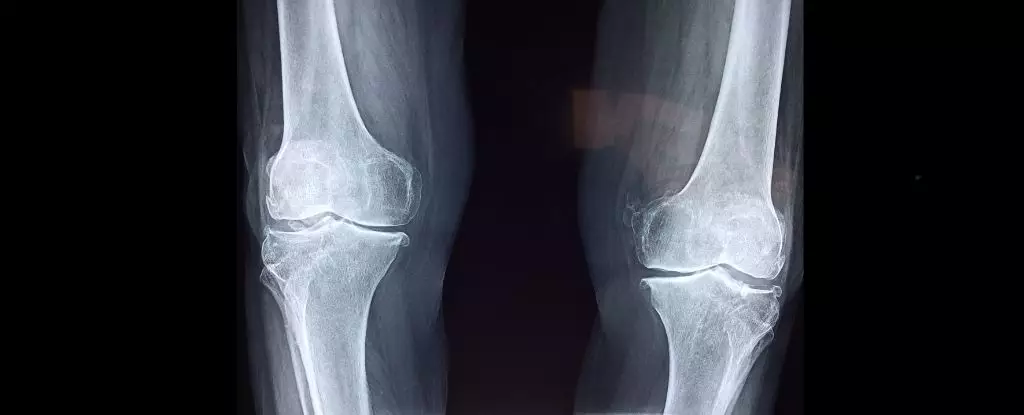Osteoporosis is often described as a “silent disease,” a term that underscores the insidious nature of this condition. Many individuals go about their lives unaware of the internal changes happening to their bone density and strength until the debilitating moment when a fracture occurs. Indeed, the nickname “silent killer” takes on a new context when considering the staggering statistics: over 10 million Americans currently suffer from osteoporosis, and another 43 million are teetering on the brink with low bone mass. Projections indicate that by 2030, this number could surge to 71 million, a reality attributed to various lifestyle factors, including smoking, physical inactivity, and excessive alcohol consumption. It is essential to grasp the implications of osteoporosis fully and to recognize that while it may seem unavoidable with age, proactive measures can significantly mitigate the risk.
At the heart of osteoporosis lies a concerning lack of awareness pertaining to its symptoms and potential complications. One of the most severe outcomes of osteoporosis is fractures, which, as research shows, can lead to not only physical pain and disability but also to emotional distress, hospitalization, and ultimately, a reduced quality of life. Each year, osteoporosis accounts for nearly 9 million fractures globally, translating to an astonishing incidence of one fracture every three seconds.
Common sites for these fractures include the hip, wrist, and spine. Oftentimes, minor falls or bumps can result in significant injuries for individuals with compromised bone density. Those who experience noticeable shrinkage in stature may find that they are suffering from compression fractures in their spine, which can result in a loss of height far exceeding the normal age-related decline. Such symptoms—including spinal curvature and persistent back pain—serve as vital warning signs that should not be overlooked, as they indicate a deterioration of bone health that requires immediate attention.
While osteoporosis may not be entirely reversible, the good news is that specific dietary and lifestyle interventions can drastically lower one’s risk of developing the disease. Calcium and vitamin D are two pivotal nutrients that bolster bone strength. Calcium acts as the primary building block for bone, whereas vitamin D enhances calcium absorption in the body. Current guidelines recommend that women over 50 and men over 70 consume at least 1,200 mg of calcium daily, ideally sourced from both food and supplements when necessary.
For individuals not consuming dairy, there are plentiful non-dairy sources of calcium in plant-based foods like soy, legumes, and leafy greens. Adults should aim for two to three servings of calcium-rich foods spread throughout the day to optimize absorption. Vitamin D can largely be synthesized through sunlight exposure, but individuals living in less sunny climates or those with darker skin may require additional supplementation to meet their needs. If diagnosed with osteoporosis, consulting with a healthcare provider for potential medication might also be a beneficial step.
The Importance of Exercise
Regular physical activity plays an invaluable role in preventing osteoporosis. Engaging in weight-bearing exercises such as brisk walking, jogging, and dancing can enhance bone density. Additionally, strength training not only improves muscle stability and coordination but also reduces the likelihood of falls, which are particularly dangerous for individuals at risk of fractures. For optimal bone health, adults should aim for at least 30 minutes of weight-bearing activity four times a week coupled with strength training sessions at least twice a week.
It’s vital to acknowledge that women face a heightened risk of bone density loss during and after menopause; hence, regular exercise becomes increasingly critical during these life stages. Furthermore, individuals should actively work to eliminate detrimental habits such as smoking and excessive alcohol consumption, both of which significantly degrade bone integrity.
Screening and Early Detection
Proactive measures toward osteoporosis management also involve regular health screenings and understanding personal risk factors. Women are advised to begin osteoporosis screening at the age of 65, while men should be evaluated based on specific risk factors that may predispose them to the disease. Techniques such as bone density scans and spinal X-rays can provide a clearer picture of bone health and highlight any compression fractures.
Managing osteoporosis is not a sprint but rather a marathon—requiring a consistent commitment to lifestyle modifications. The adoption of preventive strategies such as healthy eating, regular physical activity, and early detection can serve as the cornerstone for maintaining bone health and preventing the onset of this silent yet life-altering condition. Taking these steps today can pave the way for stronger bones and better health in the future.


Leave a Reply